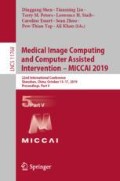Abstract
Recent advances in machine learning for medical imaging have led to impressive increases in model complexity and overall capabilities. However, the ability to discern the precise information a machine learning method is using to make decisions has lagged behind and it is often unclear how these performances are in fact achieved. Conventional evaluation metrics that reduce method performance to a single number or a curve only provide limited insights. Yet, systems used in clinical practice demand thorough validation that such crude characterizations miss. To this end, we present a framework to evaluate classification methods based on a number of interpretable concepts that are crucial for a clinical task. Our approach is inspired by the Turing Test concept and how to devise a test that adaptively questions a method for its ability to interpret medical images. To do this, we make use of a Twenty Questions paradigm whereby we use a probabilistic model to characterize the method’s capacity to grasp task-specific concepts, and we introduce a strategy to sequentially query the method according to its previous answers. The results show that the probabilistic model is able to expose both the dataset’s and the method’s biases, and can be used to reduce the number of queries needed for confident performance evaluation.
Access this chapter
Tax calculation will be finalised at checkout
Purchases are for personal use only
Notes
- 1.
The approach would be unchanged if the outcome frequency was used.
- 2.
References
Antol, S., et al.: VQA: visual question answering. In: The IEEE International Conference on Computer Vision (ICCV), December 2015
Bendig, A.: Twenty questions: an information analysis. J. Exp. Psychol. 5, 345–348 (1953)
Chuquicusma, M.J., Hussein, S., Burt, J., Bagci, U.: How to fool radiologists with generative adversarial networks? a visual turing test for lung cancer diagnosis. In: 2018 IEEE 15th International Symposium on Biomedical Imaging (ISBI 2018), pp. 240–244. IEEE (2018)
Geman, D., Geman, S., Hallonquist, N., Younes, L.: Visual turing test for computer vision systems. Proc. Natl. Acad. Sci. 112(12), 3618–3623 (2015)
Hasan, S.A., Ling, Y., Farri, O., Liu, J., Lungren, M., Müller, H.: Overview of the ImageCLEF 2018 medical domain visual question answering task. In: CLEF 2018 Working Notes (2018)
He, K., Zhang, X., Ren, S., Sun, J.: Deep residual learning for image recognition. In: Proceedings of the IEEE Conference on Computer Vision and Pattern Recognition, pp. 770–778 (2016)
Jedynak, B., Frazier, P., Sznitman, R.: Twenty questions with noise: Bayes optimal policies for entropy loss. J. Appl. Probab. 1, 114–136 (2012)
Lau, J.J., Gayen, S., Abacha, A.B., Demner-Fushman, D.: A dataset of clinically generated visual questions and answers about radiology images. Sci. Data 5, 180251 (2018)
Maier-Hein, L., et al.: Author correction: why rankings of biomedical image analysis competitions should be interpreted with care. Nat. Commun. 10(1), 588 (2019)
Prasanna, P., et al.: Indian diabetic retinopathy image dataset (IDRiD) (2018)
Rasmussen, C.E.: Gaussian Processes for Machine Learning. MIT Press, Cambridge (2006)
Schlegl, T., Seeböck, P., Waldstein, S.M., Langs, G., Schmidt-Erfurth, U.: f-AnoGAN: fast unsupervised anomaly detection with generative adversarial networks. Med. Image Anal. 54, 30–44 (2019)
Turing, A.: Computing machinery and intelligence. Mind 49(236), 433–460 (1950)
Wu, Q., Teney, D., Wang, P., Shen, C., Dick, A., van den Hengel, A.: Visual question answering: a survey of methods and datasets. Comput. Vis. Image Underst. 163, 21–40 (2017)
Yu, F., Koltun, V., Funkhouser, T.: Dilated residual networks, May 2017
Author information
Authors and Affiliations
Corresponding author
Editor information
Editors and Affiliations
Rights and permissions
Copyright information
© 2019 Springer Nature Switzerland AG
About this paper
Cite this paper
Fountoukidou, T., Sznitman, R. (2019). Concept-Centric Visual Turing Tests for Method Validation. In: Shen, D., et al. Medical Image Computing and Computer Assisted Intervention – MICCAI 2019. MICCAI 2019. Lecture Notes in Computer Science(), vol 11768. Springer, Cham. https://doi.org/10.1007/978-3-030-32254-0_29
Download citation
DOI: https://doi.org/10.1007/978-3-030-32254-0_29
Published:
Publisher Name: Springer, Cham
Print ISBN: 978-3-030-32253-3
Online ISBN: 978-3-030-32254-0
eBook Packages: Computer ScienceComputer Science (R0)


